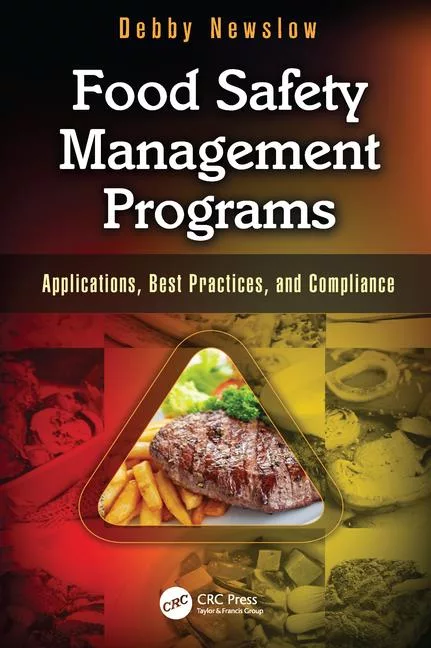From Pitch Fork to Salad Fork

Food safety laws in the United States took a huge step forward with the recent publication of two sweeping food safety rules aimed at preventing the contamination of produce and processed foods. These proposed rules, when finalized, will usher in monumental changes in the way the U.S. Food and Drug Administration (FDA) regulates food and, more importantly, in the way food producers and manufacturers will need to operate their businesses to ensure ongoing compliance with the law. This article briefly summarizes the proposed rules and highlights some potentially troublesome and burdensome provisions that members of the food industry may wish to address in comments to FDA. A more in-depth discussion and analysis of the law and proposed regulations will follow in an upcoming issue of Food Safety Magazine.
Background
The FDA Food Safety Modernization Act (FSMA) gives the FDA broad new powers, and in its proposed rules, the Agency squarely shifts the regulatory focus of FDA to prevention from after-the-fact containment based on voluntary recalls, such as recent crises involving contaminated products, ranging from cantaloupes to peanut butter. These burdens include drafting a written food safety plan and development of a corrective action plan for when problems arise. In addition to these newly published proposed rules, FDA has also recently outlined some of the other provisions of FSMA, including the authority to collect fees from companies within the food industry for reinspection-related costs, the authority to suspend food facility registration and new criteria for the administrative detention of imported foods. There are two proposed rules, the Preventative Controls rule and the Produce Safety rule, which are summarized below.
The Preventative Controls proposed rule will implement Section 103 of FSMA, which requires food facilities to evaluate hazards, identify and implement preventative controls, verify that the preventative controls are adequate to control the hazards identified, take corrective action when needed and maintain a written food safety plan. The requirements outlined are similar to the Hazard Analysis and Critical Control Points (HACCP) systems that are currently in place for juice and seafood, in which operators of a facility are required to understand the hazards that are reasonably likely to occur in their operation and to put into place controls to minimize and prevent the hazards.
This proposed rule applies to facilities that manufacture, process, pack or hold human food, which means that this generally applies to facilities that are currently required to register with FDA. The proposed rule exempts certain facilities, but FDA may withdraw certain exemptions to protect the public health. Facilities such as warehouses that only store packaged foods and that are not exposed to the environment would not be subject to the proposed rule, nor are foods already governed by FDA’s HACCP regulations (i.e., seafood, low-acid canned food and juice). Dietary supplements are also exempt.
Each covered facility would be required to prepare and implement a written food safety plan by a “qualified individual,” and written plans must include a written hazard analysis that identifies and evaluates known or reasonably foreseeable hazards for each type of food manufactured, processed, packed or held at the facility. Each plan must also include preventative controls for process, food allergen and sanitation, and a recall plan should a hazard be discovered. In addition, facilities will be required to develop monitoring procedures to document and verify that the preventative controls are consistently performed and implemented. Facilities also will be required to provide FDA with copies of their food safety plans, including the hazard analysis, as well as records of the preventative controls, monitoring, corrective actions and verification procedures.
While food producers would have some autonomy in how they comply with the new rules, should they fail, enforcement action may include a mandatory recall, suspension of registration and the imposition of fees for reinspections of failed facilities.
The Produce Safety proposed rule directs the FDA to set science-based standards to minimize the risk of serious adverse health consequences or death from contaminated produce. FDA defines “produce” in a somewhat peculiar, but important, way. Specifically, FDA deems “produce” to include fruits and vegetables grown for human consumption, such as spinach, cantaloupe and tree nuts, as well as mixes of intact fruits such as fruit baskets. “Produce” does not, however, include raw agricultural commodities that are rarely consumed raw, such as potatoes, corn, squash, asparagus and others. Nor does “produce” include products produced for personal or on-farm consumption. Produce destined for commercial processing such as canning is separately exempt from aspects of the rule.
Farmers are now faced with making costly changes to how they conduct business that may include building fences to keep out wildlife, waiting a certain period of time before harvesting crops where domestic animals have grazed to ensure that the crops aren’t contaminated by animal waste, and ensuring and documenting that equipment and buildings are sanitized appropriately. In addition, farmers would have to ensure via periodic testing that all agricultural water used on their crops is safe and of adequate sanitary quality.
Compliance and Cost Concerns for Industry
The expected costs of complying with these new rules are a major concern for industry as many observers believe that FDA has underestimated the costs by a significant degree. FDA estimated that the overall first-year cost to industry for the two rules will be $1.3 billion annually, but in reality, we expect the monetary burden on industry to be far higher. FSMA calls on the FDA to increase inspections, particularly at “high-risk” facilities prone to contamination, and to hire about 2,000 new inspectors, of which the estimated cost for the government is $1.4 billion over the first 5 years. FDA will most likely request congressional authorization for user fees from food companies and farms, which would help pay for the increased oversight costs as mandated by FSMA, increasing the costs further for an industry already faced with looming costs associated with implementation of the rules. It is not inconceivable that many of these costs will be passed onto consumers, driving the cost of food even higher and making it harder for American families to make ends meet.
Sonali P. Gunawardhana and James N. Czaban are Members of Wiley Rein’s Food & Drug Law practice group.
Looking for quick answers on food safety topics?
Try Ask FSM, our new smart AI search tool.
Ask FSM →








